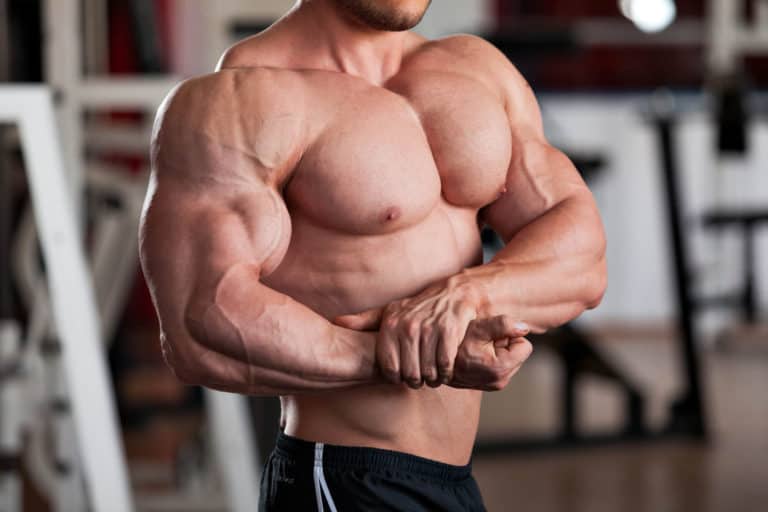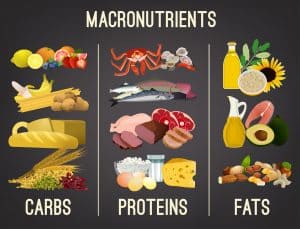Calves are known to be slow-twitch muscle fibers.
Meaning that they have strong resistance to fatigue and a short range of motion.
If you have big calves, congratulations.
Because most likely you’re genetically gifted in that muscle group and all you need is probably some activation training.
But if you’re not one of those.
You have some homework to do.
A hard one, unfortunately.
Because growing stubborn calf muscles is one of the hardest missions in bodybuilding.
But it is NOT IMPOSSIBLE.
In this post, I’ll show you how to train your calves the proper way and force them to grow.
8 Tips to Grow Your Calf Muscles
Here are some tips to help you grow your stubborn calves.
1
Eliminate The Limiting Beliefs
Don’t blame genetics. Sure they play a big role in insertion, peak, size, etc., but so do they in all muscle groups.
You have to believe that hard work and effort overcome genetics.
2
Train them with intensity.
It’s ironic that some lifters put the least effort into training their calves and complain about having small calves despite the fact that they are a tough muscle group.
Ask yourself this question…
Do you train your calves as hard as your legs or back?
Most likely not.
In this case, you’ve got some work to do.
If you’re leaving your calves at the end of a leg day and doing 2 sets of 15, do not be surprised if they don’t grow.
Incorporate drop sets, cluster sets, supersets, partials, etc.
3
Go beyond Failure.
Failure is defined as the point at which you cannot perform more reps with the correct form. Do more repetition beyond that point (beyond failure).
Go through the pain and develop pain tolerance as go through the high number of repetitions.
Better yet, don’t start counting the reps until your calves start to burn.
This might sound like a lot. But since the volume is too low (2 exercises only as we discuss below), it won’t be a big barrier to overcome.
Do this on every single set, unless you are a beginner. In that case, it is OK to only go to failure.
4
Focus on Stretching the Calves.
Your calves get a ton of activation from contraction because of the plantar flexion (pushing your foot down) when walking. And your calves are used to it.
What your calves are not used to is stretching.
Ideally, you want to fully stretch your calf muscle in every repetition and pause for about one second. Don’t bounce off the bottom. Control the movement.
This will enable you to place more tension on the Achilles tendon and establish the mind-muscle connection with your calves.
Correct Form. Stretch your calves all the way down. Photo credit: Indy performance authority.

5
Train your Tibias.
This muscle’s function is to dorsiflex your foot (i.e. pulling your foot up). It is like the bicep of your shin.
Incorporate tibia raises. Preferably, superset your tibia after calves gastroc (the inner head of your calves).
If you have a tibia machine in your gym, great. If not place your heels on the edge of a bench and dorsiflex your toes for as many reps as you can.
Train your Tibias to develop shin thickness. Place your heels on the edge of a bench and lift your toes up. Credit: John Meadows -mountaindog1.

6
Use Lighter weights.
Not “lightweight”.
If the weight is too heavy and you could barely perform the full range of motion, you are shifting the tension away from your calves and using too much momentum.
Master the form first.
7
Frequency also matters.
Don’t settle for a few sets after the leg workout.
Train them 3 to 4 times a week. Once on at the end of your leg day and another 2 or 3 times at the beginning of chest, back, and/or shoulder day.
8
Start with Calves once you arrive at the gym.
With the exception of leg day, start your workout with calves.
This way you (1) prioritize them, get them out the way (2) warm your body before the actual workout.

Training Program to Build Bigger Calves
Ok, so how do you train them?
Ideally 3 times a week.
On the leg day:
(1) 5 sets of seated raises – as many reps until failure: then 10 reps beyond failure with partials. Last two sets: cluster or drop set.
(2) 5 sets of standing raises -as many reps until failure: 10 reps beyond failure with partials. Superset with tibia raises 30 reps.
(3) Finish with a walk around the gym on your toes flexing your calves.
The first exercise on the back day:
6 sets of calf raises on leg press machine: Beyond failure. Last two sets: cluster or drop set.
The first exercise on the chest or shoulders day:
6 sets of standing or seated raises: Beyond failure. Last two sets: cluster or drop set.
Once you finish each set, stretch the calves for 10-20 seconds.
Don’t be obsessed with your foot position. Toes in or out won’t make a huge difference.
Use what feels best for you.
Also on "How to Get Bigger" Series

How to Get Bigger Biceps?

How to Build Bigger Triceps?

How to Build Bigger Legs? 15 Tips to Build Bigger and Stronger Legs

How to Build Bigger Shoulders?

How to Get A Bigger Chest?

10 Tips to Get a Bigger Back and Wider Lats

The Best Exercises for Abs and Core Strength














